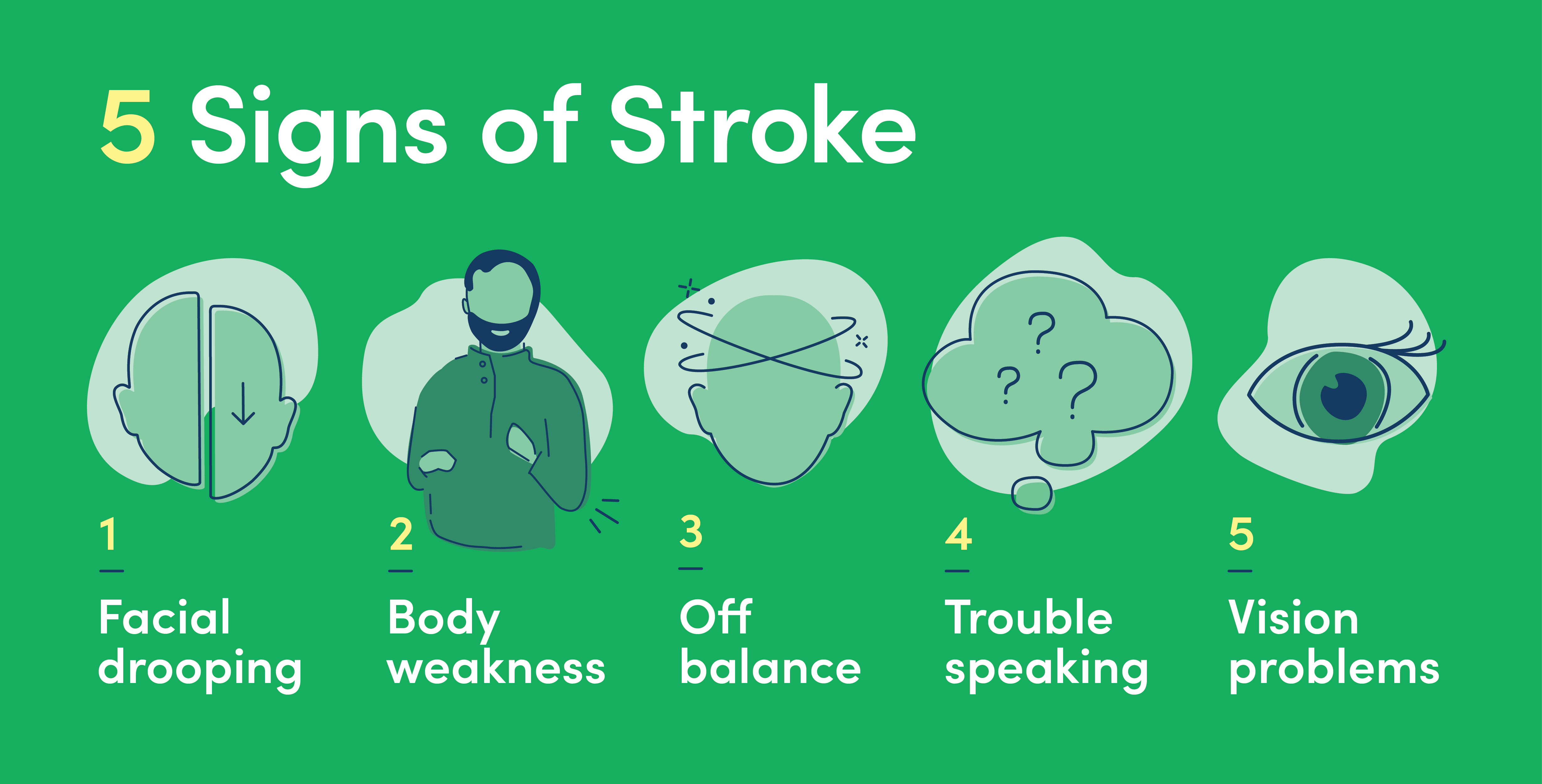Identify Stroke Symptoms
Strokes are the fifth-leading cause of death in the United States and the leading cause of long-term disability*. You should know the five signs of a stroke in progress so you can take immediate action to help save a life, minimize damage, and maximize the chances of recovery.
Recognize a stroke in progress: Act fast to save a life
When a stroke happens, there’s little time before permanent damage occurs. You should know the warning signs and symptoms so you can get help quickly for yourself or a loved one to help minimize the long-term effects.
5 Signs of Stroke

If you see any of these stroke signs, call 911 immediately or go to the nearest emergency room:
- Facial weakness or drooping
- Arm, face, or leg weakness, especially on one side of the body
- Difficulty balancing
- Speech difficulties or confusion
- Changes in eyesight or vision problems
Women often experience these stroke symptoms:
- Loss of consciousness or fainting
- General weakness
- Shortness of breath
- Sudden behavioral change
- Hallucination
- Nausea or vomiting
- Seizures
- Hiccups
AHN stroke diagnostics using RAPID® technology
It is crucial to make an accurate stroke diagnosis so patients can start specialized stroke treatments as soon as possible. Stroke can be diagnosed by:
- Physical exam and blood tests.
- Computerized tomography (CT) scan.
- Magnetic resonance imaging (MRI).
- Ultrasound of the neck.
- Echocardiogram.
AHN Stroke Centers use RAPID® technology to help our team of specialists determine the type of stroke that occurred and create an individual stroke treatment plan, fast.
RAPID technology helps us:
- Rapidly process CT scans and shows how blood is flowing in the brain.
- Identify what areas of the brain are damaged and what areas are still healthy and viable.
- Extend the treatment window for minimally invasive endovascular therapy — from 6 hours to 24 hours — before more invasive surgical procedures become the only option.
Learn how to reduce your stroke risk
Talk with a doctor about your stroke risk factors and what you can do to help prevent one. You can request an appointment with your current AHN primary care physician (PCP), or make an appointment with a new one near you by calling (412) DOCTORS (412) 362-8677.
You can also use our virtual appointment options for the most convenient appointment possible.
-
Appointments
(412) DOCTORS
Source: https://www.stroke.org/en/about-stroke
RAPID is a registered trademark of iSchemaView, Inc.

